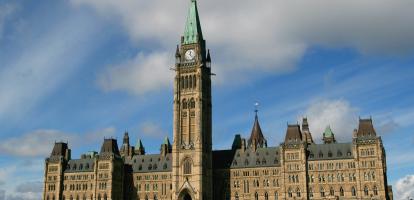International business breathed a sigh of relief with the signing on Jan. 15 of the U.S.-China Phase 1 trade deal. Markets reacted with typical exuberance, overlooking the fact this is an armistice, not a peace treaty.
But even a short-term downing of arms, if it leads to the two countries moving on to a truly comprehensive trade agreement, is better than a trade war and its global reverberations. We need to see how things unfold.
The deal has been cheered in U.S. President Donald Trump’s tweets and other quarters south of the border because of Chinese undertakings allowing greater American market access with fewer tied conditions, commitments for the benefit of U.S. companies only. Commentaries such as those in The New York Times have typically focused on what’s in it for the United States. Criticisms, including by Democrats in Congress, are that the deal doesn’t go far enough in curbing Chinese rules in their application to American companies.
However, as Barrie McKenna wrote recently, even if it’s buying some trade peace between these two economic powers, the Phase 1 deal is another blow to global order, where long-established rules have prohibited these kinds of special, one-on-one preferential arrangements that benefit two countries at the expense of the rest of the world.
“They have stepped outside the usual framework for doing deals ... and they are dealing directly on a bilateral basis and we will have to assess whether it is WTO compliant,” said Phil Hogan, the European Union’s new hard-driving Trade Commissioner.
That modulated comment reflects the EU’s caution in trying not to upset Mr. Trump as the Europeans gear up for trade negotiations with the Americans, while still facing the continued threat of U.S. surcharges on European automobiles. The EU is being careful here. So are other countries, including Canada, not wanting to detract from the immediate stabilizing effect of the armistice, cautious about being critical or voicing concerns over the negative implications for the global trading system at large.
One of the underpinnings of that system, going back to the General Agreement on Tariffs and Trade (GATT) in 1947 and carried forward in the 1994 agreement establishing the WTO, is to prohibit preferential deals between countries at the expense of other trade partners. Only where these kinds of preferential arrangements are truly comprehensive, covering all trade between the parties, do they pass WTO muster, such as the ones Canada is party to – the United States-Mexico-Canada Agreement (USMCA), the Canada-European Union Comprehensive Economic and Trade Agreement (CETA) and the Comprehensive and Progressive Agreement for Trans-Pacific Partnership (CPTPP).
Contrary to these rules, what we have in this so-called Phase 1 agreement is a blatantly preferential deal covering selected U.S. sectors and industries with Chinese purchase and other commitments, and corresponding U.S.-only advantages that directly infringe on the WTO’s non-discrimination rule.
With the Chinese and Americans ignoring multilateral commitments in this way, other countries, in like manner, could sign limited preferential agreements such as this one, labelled in the same way, and use the first-step argument as a way of circumventing WTO treaty requirements.
Beyond its impact on the multilateral trading order are the broader geopolitical implications of the deal. It’s another signal that, between them, the U.S. and China see the world largely in bipolar terms, unencumbered by multilateral commitments, including the WTO agreement.
At the same time, the U.S. under Mr. Trump is retrenching from international involvement and is viewed by many governments as an increasingly unreliable ally. This has major strategic implications for western allies, including Canada.
In the case of China’s appropriation of maritime space in the South China Sea, the only effective counterforce is the maritime might of the U.S. navy and any settlement of that increasingly tense situation can only come about through direct dealings between the U.S. and China. China’s aggressive Belt and Road initiative and its major strategic challenges for the West, in reality can only be effectively countered by U.S. economic power and American leadership.
There are, of course, serious regional issues with global implications – the Middle East is a prime example – where other players and other forces are at work. However, the accession of China in a new bipolar world order – replacing the Soviet Union of Cold War days – is the underlying significance of the Phase 1 trade deal. In these circumstances, the absence of steadfast American leadership adds enormously to the strategic challenges Canada and other Western allies are facing in the decade ahead.
Published in the Globe and Mail
Lawrence Herman, a former Canadian diplomat, is counsel at Herman & Associates and senior fellow of the C.D. Howe Institute in Toronto




